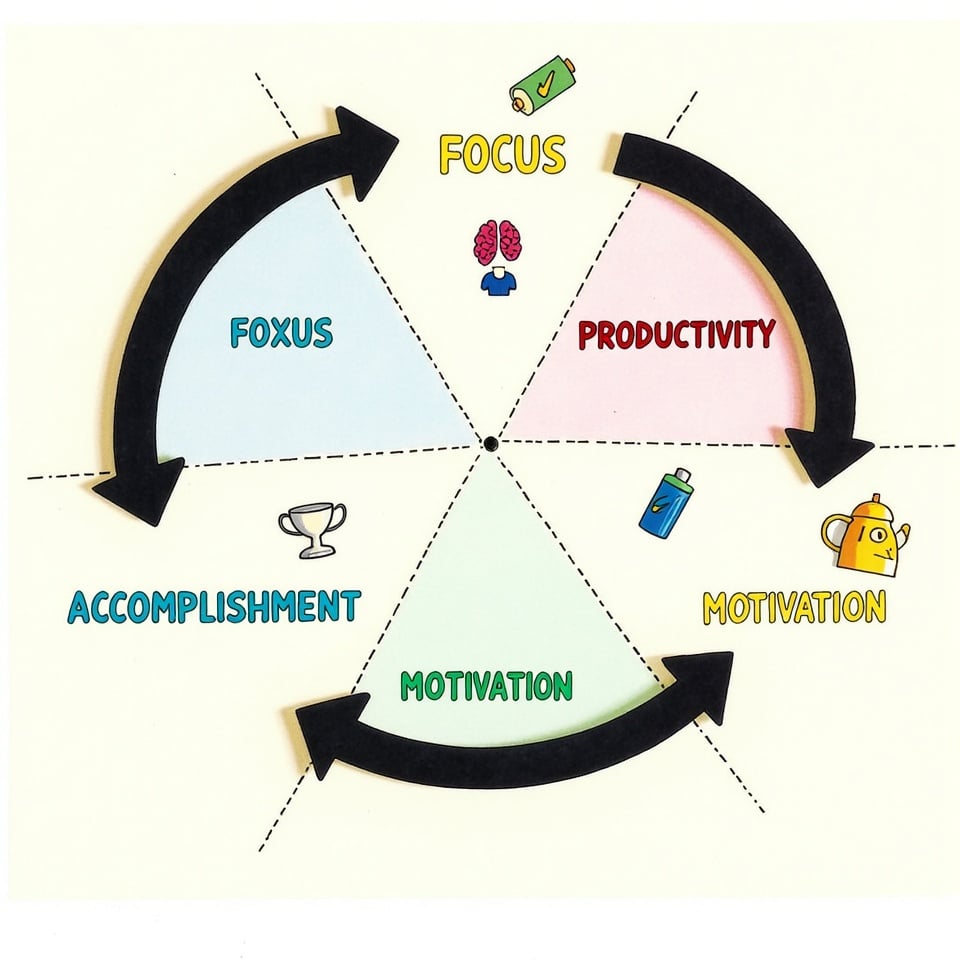Commas, those tiny punctuation marks, play a crucial role in shaping the clarity and flow of our writing. Often misunderstood or misused, commas can make or break a sentence’s meaning.
In this article, we’ll explore the essential rules and common pitfalls of comma usage, helping you navigate the intricacies of this versatile punctuation mark.
Whether you’re a student, professional, or casual writer, mastering commas will elevate your writing to new levels of precision and effectiveness.
Table of Contents
What is a comma?
A comma is a punctuation mark (,) used to indicate a pause or separation within a sentence, helping to clarify meaning, structure thoughts, and improve readability in written English.
It serves multiple functions, including separating items in a list, joining independent clauses, setting off introductory elements, and distinguishing non-essential information within a sentence.
Rules for using commas
Commas play a crucial role in separating items in a list, providing clarity and structure to sentences that contain multiple elements.
When writing a series of three or more words, phrases, or clauses, commas are used to distinguish each item, making the text easier to read and understand. The final comma before the coordinating conjunction (usually “and” or “or”) is known as the Oxford or serial comma.
While its use is sometimes debated, many style guides recommend including it to avoid ambiguity. This rule applies to both simple lists of nouns and more complex series of phrases or clauses.
Examples:
- Simple list: “For the picnic, we packed sandwiches, fruit, chips, and drinks.”
- Complex series: “The museum offers guided tours on Mondays, hands-on workshops for children on Wednesdays, special exhibitions on weekends, and free admission on the first Friday of each month.”
- With Oxford comma for clarity: “I dedicate this book to my parents, Ayn Rand, and God.” (Implies four separate entities)
Without Oxford comma: “I dedicate this book to my parents, Ayn Rand and God.” (Could be misinterpreted as the parents being Ayn Rand and God)
When to use commas
Commas play a crucial role in separating items in a series, also known as the serial comma or Oxford comma. This usage ensures clarity and prevents ambiguity when listing three or more elements in a sentence.
By placing a comma before the coordinating conjunction (usually “and” or “or”) that precedes the final item, writers can avoid potential misunderstandings and maintain a consistent rhythm in their prose.
While some style guides consider this comma optional, many professional writers and editors recommend its use to eliminate any possibility of misinterpretation.
Example:
Without serial comma: “I dedicate this book to my parents, Ayn Rand and God.”
With serial comma: “I dedicate this book to my parents, Ayn Rand, and God.”
In the first sentence without the serial comma, it could be interpreted that the writer’s parents are Ayn Rand and God.
In the second sentence with the serial comma, it’s clear that the writer is dedicating the book to three separate entities: their parents, Ayn Rand, and God.
Commas with lists
Commas are essential for organizing and clarifying lists within sentences. They separate individual items, prevent confusion, and enhance readability.
In lists of three or more items, commas are used between each element, with many style guides recommending the Oxford comma before the final conjunction.
This practice helps avoid ambiguity and ensures clear communication. For more complex lists or those with internal commas, semicolons may be used instead to maintain clarity.
Example:
“For the party, we need balloons, streamers, and cake.”
In this sentence, commas separate the three items in the list, with the Oxford comma before “and” to clearly distinguish the final item.
Serial comma (oxford comma)
The serial comma, also known as the Oxford comma, is a punctuation mark placed before the final coordinating conjunction in a list of three or more items. Its primary purpose is to prevent ambiguity and ensure clarity in complex lists.
While some style guides consider it optional, many professional writers and organizations advocate for its consistent use to avoid potential misunderstandings and maintain a uniform writing style.
Example:
Without serial comma: “I dedicate this book to my parents, Ayn Rand and God.”
With serial comma: “I dedicate this book to my parents, Ayn Rand, and God.”
In the first sentence, it could be misinterpreted that the writer’s parents are Ayn Rand and God. The second sentence clearly indicates three separate dedications.
Commas with and
Commas are often used with the conjunction “and” to clarify sentence structure and meaning. The most common use is in lists of three or more items, where a comma (known as the serial or Oxford comma) is placed before “and” to separate the final item. Additionally, a comma is required before “and” when it joins two independent clauses. However, commas are typically not used when “and” connects only two items or parts of a compound subject or object.
Example:
With serial comma: “We packed sandwiches, fruit, and drinks for the picnic.”
Joining independent clauses: “The sun was setting, and the temperature was dropping rapidly.”
No comma needed: “Tom and Sarah arrived early for the meeting.”
Commas with but
The conjunction “but” often signals a contrast or exception in a sentence, and using commas correctly with it is essential for clear communication. Generally, a comma is required before “but” when it joins two independent clauses, forming a compound sentence. This helps readers distinguish between the two main ideas being contrasted. However, when “but” is used within a single clause or to join elements of a predicate, a comma is typically not needed.
Example:
With comma (joining independent clauses): “I wanted to attend the concert, but I had to work late.”
Without comma (within a single clause): “The movie was long but entertaining.”
Commas with introductory phrases
Introductory phrases are used to provide context or additional information at the beginning of a sentence. Commas typically follow these phrases to separate them from the main clause, prevent misreading, and provide a natural pause.
Common types of introductory phrases include prepositional, participial, infinitive, and adverbial phrases.
While the general rule is to use a comma after an introductory phrase, very short phrases (usually three words or fewer) may not require a comma if there’s no risk of misreading.
Example:
With comma: “After the long meeting, we all went out for coffee.”
Short phrase without comma: “In 2020 the world faced a global pandemic.”
Commas with dates
Commas are used with dates primarily in the month-day-year format, where a comma separates the day and year, and another follows the year if the sentence continues. In the day-month-year format, typically no commas are used. When only the month and year are given, no comma is needed. For days of the week with dates, a comma follows the day name. These rules help maintain clarity and adhere to standard writing conventions.
Example:
Month-day-year: “The conference is scheduled for July 15, 2024, at the convention center.”
Day-month-year: “The meeting will be held on 15 July 2024 in London.”
Month and year only: “The project is set to launch in August 2025.”
Commas with coordinate adjectives
Coordinate adjectives are adjectives of equal importance that independently modify the same noun. Use commas between coordinate adjectives if you can insert “and” between them or rearrange their order without changing the sentence’s meaning.
However, don’t use commas with cumulative adjectives (those that build upon each other), adjectives of different types (like size and color), or adjectives that form a single unit of description. The proper use of commas with coordinate adjectives enhances clarity and helps readers understand the relationships between descriptors.
Example:
With comma (coordinate adjectives): “It was a long, tiring day.”
Without comma (cumulative adjectives): “She bought a small round table.”
Commas with relative clauses
Relative clauses provide additional information about a noun or noun phrase in a sentence. The use of commas with relative clauses depends on whether the clause is restrictive (essential) or non-restrictive (non-essential). Restrictive clauses are crucial to the sentence’s meaning and don’t use commas, often beginning with “that” or “who/whom/whose” without a comma.
Non-restrictive clauses offer extra, non-essential information and are set off by commas, typically starting with “which” or “who/whom/whose” preceded by a comma. Proper use of commas with relative clauses enhances clarity and helps readers understand the relationships between different parts of the sentence.
Example:
Restrictive (no commas): “The book that I borrowed from the library is overdue.”
Non-restrictive (with commas): “My sister, who lives in Paris, is visiting next month.”
Commas with appositives
Appositives are nouns or noun phrases that rename or describe another noun in a sentence. Commas are used with nonessential appositives, which provide additional but not crucial information, setting them off from the rest of the sentence. Essential appositives, which are necessary for the sentence’s meaning, are not set off by commas. The use of commas with appositives helps clarify the relationship between the appositive and the noun it describes, enhancing the overall clarity of the sentence.
Example:
Nonessential (with commas): “My brother, a talented musician, performs every weekend.”
Essential (without commas): “The author J.K. Rowling created the Harry Potter series.”
Commas with interrupters or parenthetical elements
Interrupters or parenthetical elements are words, phrases, or clauses that break the flow of a sentence to provide additional information or commentary. They are typically set off by commas on both sides when they appear in the middle of a sentence, or by a single comma when at the beginning or end. These elements include transitional expressions, interjections, mild expletives, parenthetical expressions, contrasting elements, direct addresses, tag questions, and absolute phrases. Proper use of commas with interrupters enhances clarity and helps readers understand the structure and emphasis of sentences.
Example:
“The project, despite initial setbacks, was completed on time.”
“However, the results were inconclusive.”
Commas between direct quotes and attributive tags
Commas are used to separate direct quotes from attributive tags, which identify the speaker or source of the quote. When a quote is followed by an attributive tag, the comma goes inside the closing quotation mark. If the tag precedes the quote, the comma comes after the tag. For quotes interrupted by tags, commas set off the tag on both sides. This punctuation helps readers distinguish between quoted material and the writer’s words, enhancing clarity and proper citation in various forms of writing.
Example:
“I have a dream,” said Martin Luther King Jr.
The scientist explained, “Our findings suggest a new approach.”
“The truth is,” she insisted, “that we need to act now.”
Commas with quotation marks
In American English, commas (and periods) always go inside the closing quotation marks, regardless of whether they are part of the quoted material. This rule applies to dialogue, citations, and quoted phrases within sentences. When introducing a quote, a comma is typically used before the opening quotation mark. In British English, the placement can vary depending on whether the comma is part of the quoted material, often appearing outside the quotation marks if not part of the original quote.
Example:
“I’ll be there soon,” she said, “but I might be a few minutes late.”
Commas with parentheses
Commas are generally not used with parentheses unless the sentence structure requires a comma for reasons unrelated to the parentheses. If a comma would normally appear at the point where the parentheses are inserted, place the comma after the closing parenthesis. When parentheses enclose information in the middle of a sentence, no comma is needed before or after the parentheses. The key is to prioritize clarity and readability while following these rules.
Example:
After the long meeting (which lasted over three hours), the team was exhausted.
Commas with question tags
Question tags are short questions added to the end of statements to seek confirmation or agreement. A comma is always used to separate a question tag from the main part of the sentence. The structure typically involves a positive statement followed by a negative tag, or vice versa. Question tags are more common in informal writing and speech, and they can add a conversational tone to the text when used appropriately.
Example:
You’re coming to the party, aren’t you?
Commas with direct address
Commas are essential when using a direct address in writing. Direct address occurs when a speaker or writer directly addresses a person or group by name or title. The general rule is to always set off the name or title of the person being directly addressed with commas. This applies whether the name appears at the beginning, middle, or end of the sentence. Using commas in direct address helps to identify who is being spoken to and avoids potential confusion or misinterpretation.
Example:
John, please pass me the salt.
I think, Mary, that you should reconsider your decision.
That was an excellent presentation, Professor Smith.
Commas with as well as
The use of commas with “as well as” depends on how it’s used in the sentence and what it’s connecting. Generally, when “as well as” joins two independent clauses, use a comma before it. If it introduces non-essential information, set it off with commas. When joining phrases or clauses that are not independent, a comma is typically not used. The key is to consider the sentence structure and the role of “as well as” in conveying meaning.
Example:
She enjoys painting, as well as she loves sculpting. (Joining independent clauses)
The museum, as well as the art gallery, will be closed for renovations. (Non-essential information)
She speaks French as well as German fluently. (Joining phrases, no comma needed)
Commas with such as
The use of commas with “such as” depends on whether the examples introduced are essential or non-essential to the meaning of the sentence. When “such as” introduces non-essential examples, use commas to set off the entire phrase. However, if the examples are essential to the sentence’s meaning, no commas are needed. This distinction helps readers understand the importance of the examples within the context of the sentence and ensures clear communication of ideas.
Example:
Non-essential (with commas): Citrus fruits, such as oranges, lemons, and grapefruits, are high in vitamin C.
Essential (without commas): Fruits such as apples and bananas are popular snacks.
Commas with too
The use of commas with “too” is often a matter of style and emphasis, with some general guidelines to follow. When “too” appears at the end of a sentence, a comma is optional but often used for emphasis. In the middle of a sentence, commas are generally not required. However, a comma can be used before “too” for emphasis or to indicate a pause. The key is to consider the sentence structure, intended emphasis, and overall clarity when deciding whether to use a comma with “too.”
Example:
I like chocolate, too. (Optional comma for emphasis)
She too enjoys playing tennis. (No comma needed)
The movie was long, and boring, too. (Comma for emphasis and pause)
Avoiding comma splices
A comma splice occurs when two independent clauses are incorrectly joined by only a comma. To avoid this error, you can use several strategies: separate the clauses into two sentences, use a semicolon, add a coordinating conjunction after the comma, use a subordinating conjunction to create a dependent clause, or employ a dash in less formal writing. The key is to recognize when you have two complete thoughts that could stand alone as sentences and ensure they are properly connected or separated.
Example:
Incorrect (comma splice): She loves to read, he prefers to watch movies.
Correct options:
- She loves to read. He prefers to watch movies.
- She loves to read; he prefers to watch movies.
- She loves to read, but he prefers to watch movies.
- While she loves to read, he prefers to watch movies.
Comma mistakes to avoid
Here are some common mistakes you should avoid while using commas.
Between Subjects and Verbs:
A common comma mistake is placing a comma between the subject and verb of a sentence. This incorrectly separates the two essential components of a clause. The subject and verb should remain together without a comma unless there’s a parenthetical element between them.
Example:
Incorrect: The energetic puppy, ran around the yard.
Correct: The energetic puppy ran around the yard.
In Compound Subjects or Objects:
Commas should not be used to separate parts of a compound subject or object joined by “and” unless there are more than two elements. When only two elements are present, they should be connected directly by the conjunction without a comma.
Example:
Incorrect: The cat, and the dog chased each other.
Correct: The cat and the dog chased each other.
In Compound Predicates:
A compound predicate consists of two or more verbs that share the same subject. These should not be separated by a comma unless there’s a good reason for a pause. A conjunction without a comma typically joins the verbs in a compound predicate.
Example:
Incorrect: The chef prepared the meal, and served it to the guests.
Correct: The chef prepared the meal and served it to the guests.
Between Verbs and Their Objects:
Placing a comma between a verb and its direct object disrupts the natural flow of the sentence and is grammatically incorrect. The verb and its object should be directly connected without any intervening punctuation.
Example:
Incorrect: She bought, a new car.
Correct: She bought a new car.
With Correlative Conjunctions:
Correlative conjunctions (such as “either…or,” “neither…nor,” “not only…but also”) should not be separated by commas. These pairs of conjunctions work together to connect parallel elements in a sentence and should not be interrupted by punctuation.
Example:
Incorrect: Either you come with us, or you stay home.
Correct: Either you come with us or you stay home.
Between Articles and Nouns:
Articles (a, an, the) should never be separated from their nouns by commas. These determiners are closely tied to the nouns they modify and should not be separated by any punctuation.
Example:
Incorrect: She wore a, red dress to the party.
Correct: She wore a red dress to the party.
With Than Comparisons:
A comma is often not needed before “than” in comparisons. The word “than” typically introduces the second part of a comparison and should be directly connected to the preceding element without a comma.
Example:
Incorrect: He is taller, than his brother.
Correct: He is taller than his brother.







